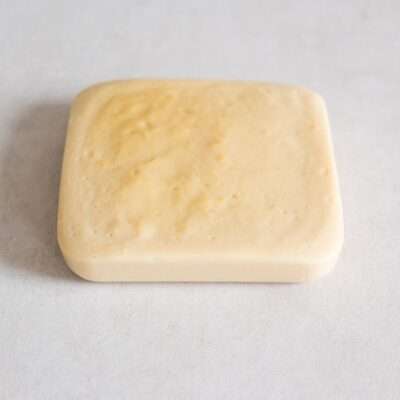
Chickpea Tofu
Did you know you can make tofu out of locally grown chickpeas? These British-grown chickpeas are harvested on the light Breckland soils of Norfolk.
Ingredients
- 200 g dried chickpeas
Instructions
- Soak the chickpeas in plenty of water overnight or for at least 8 hours.
- The next day, drain the chickpeas and pulse them in a food processor (I use Ninja) to break down slightly. Then add 500 ml of water and blend until smooth.
- Filter the blended chickpeas through a sieve into a sauce pan and use the back of the spoon to squeeze out as much liquid as possible (You can discard the leftover pulp, or use it to thicken stews, soups or even mix it into breads like this Sourdough Rye, or see my tip below to skip the straining altogether). Add 1/2 tsp of salt to the liquid and whisk it in. You will notice that some of the protein has already sunk to the bottom of the pan. Make sure to loosen it with the whisk or it will burn.
- Bring the liquid to a gentle boil, whisking constantly. Keep simmering for 1 minute, whisking every now and then, until the mixture sticks to the whisk and doesn’t instantly level out when you stir it. When you tilt the pan, the liquid should move slowly. If it feels too runny, just cook it a little longer. Once ready, pour the mixture into a mould and let it set for an hour before using.
Notes
Tip: Don’t want the leftover pulp? You don’t need to strain it! Use 100g of chickpeas, soak overnight and add to a blender instead of a food processor. The stronger the blender, the smoother the result (I use my Vitamix). Blend with 250 ml water, then add to a non-stick frying pan along with 1/2 tsp salt, bring to a simmer and cook for at least 10 minutes while stirring constantly with a spatula until thickened. The final tofu will be less refined and a little denser, basically a ‘wholemeal’ tofu, but even healthier and without any waste.
IMPORTANT: Raw legumes contain toxins like lectins as a natural defence mechanism against predators. By soaking and boiling legumes, we can dissolve those toxins and make the legumes safe to consume. Straining the tofu also helps to get rid of particles that might not cook in time. If you are going to use all of the legume without straining, you should stick to legumes like chickpeas, peas and lentils. Some beans like white kidney beans and red kidney beans contain an additional toxin called phytohaemagglutinin, which needs to be cooked longer than we do in this tofu recipe. You could still make the tofu with beans, but you’d either need to strain it like in the recipe above or you need to add much more water and simmer it for at least 20 minutes before letting it set into a tofu.